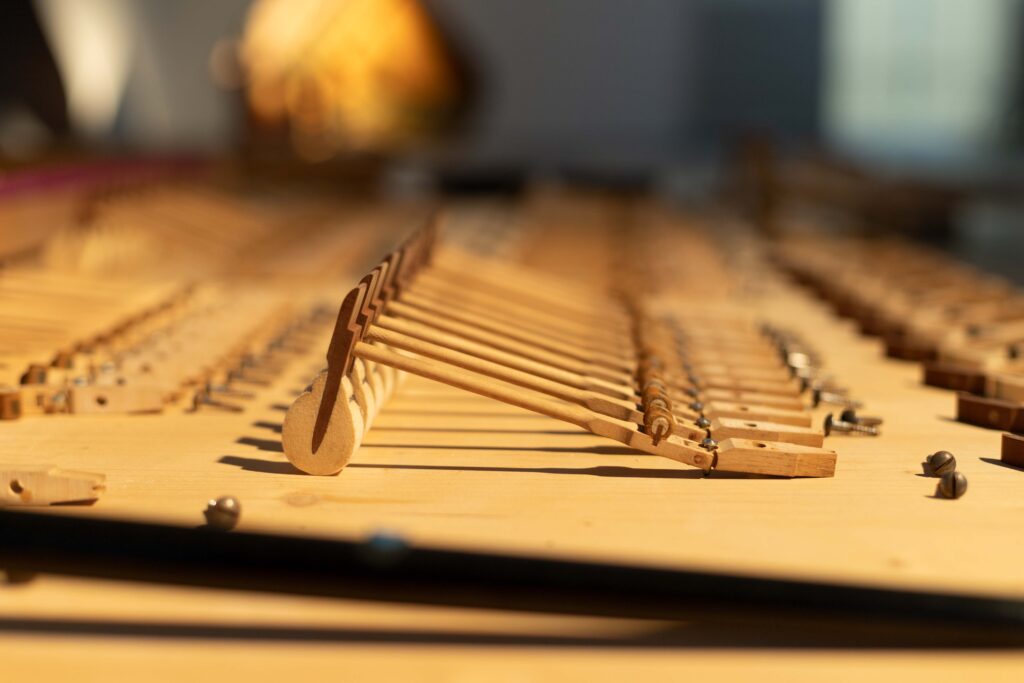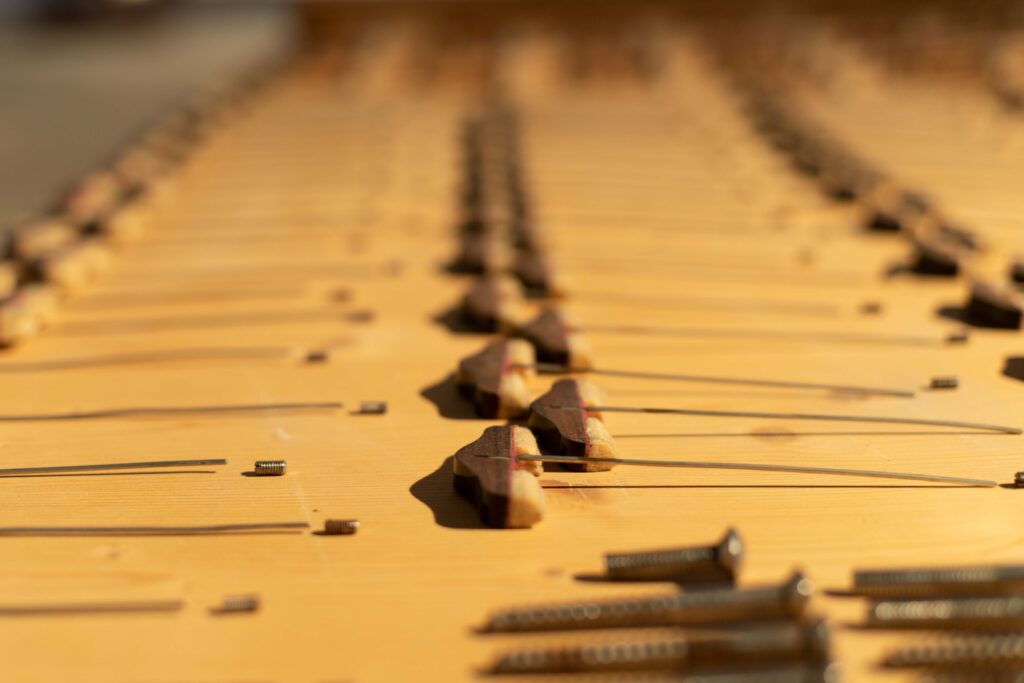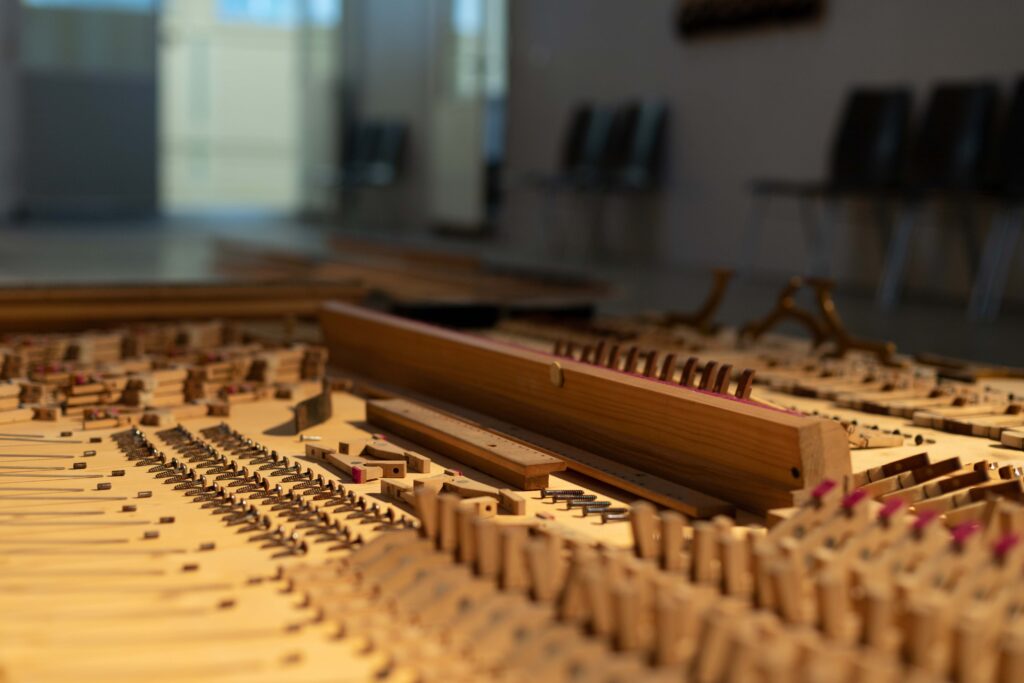


THE LAST PIANO
The work complex THE LAST PIANO focuses on a grand piano by Anton Proksch from 1935 and attempts an unconventional homage to the piano, which is divided into various works and deals intensively with the transdisciplinary archiving and digitization of this piano. The aim is to show an alternative form of archiving and digitization and at the same time to take a reflective look at the two concepts. On the one hand, it is about appreciation and accessibility, and on the other, about questioning technical progress and the necessity of tradition. The archive and the archived object as a walk-in space. The various works invite viewers to experience the piano with all their senses: Auditory. Visually. Interactive. Tactile.
As an artistic medium, the visual and auditory aesthetics of the dismantling of this piano are brought to the fore by means of an expansive installation of the individual parts, supplemented by an enveloping „soundscape“ with the sounds of the deconstruction on numerous headphones or loudspeakers. These two works are inextricably linked and form the center of this artistic oeuvre. The individual parts of the concert grand piano act as independent works of art and speak their own language, with which they can communicate with the viewer in an unusual way. these two central works are accompanied by other works such as video installations, projections, printing techniques and an interactive, audio-tactile work.
Human Music
Audio-tactile Sound installation • Audio samples in 5 touch dynamics (pianissimo – fortissimo) of the concert grand piano • touch-sensitive MIDI controller • 2023
The work Human Music ironically presents human music not as music composed by humans, but as music created by one or more humans. Music is created through one of the most important forms of interaction between people, namely touch. Different notes (from C – C) are played depending on the intensity of the touch between two people. In addition, MIDI automation generates a change of octaves over a certain period of time. This is intended to make the full range of the concert grand piano accessible as a touch-dynamic instrument. In addition to its use in this and other works, the sampling of the concert grand piano also serves to archive and digitize the sound of this concert grand piano.